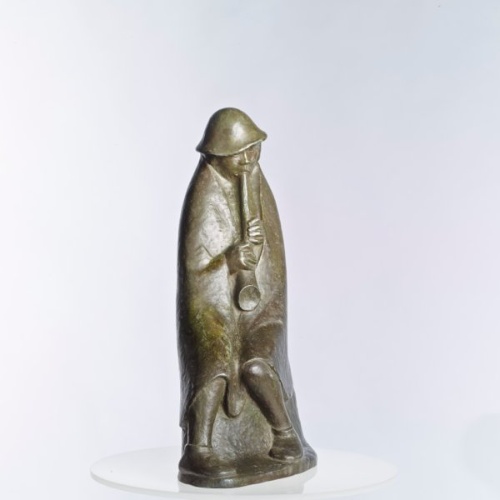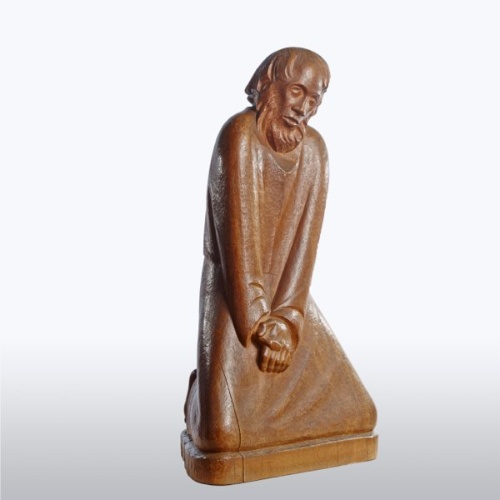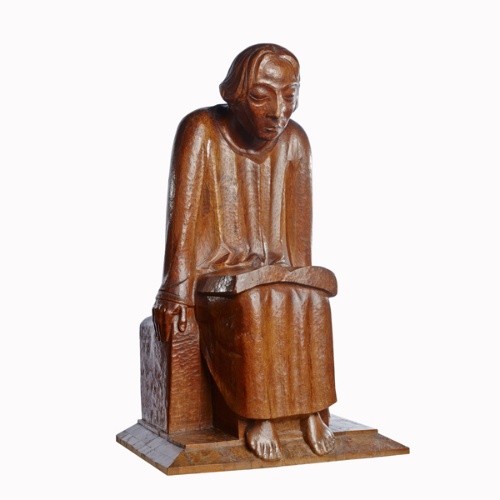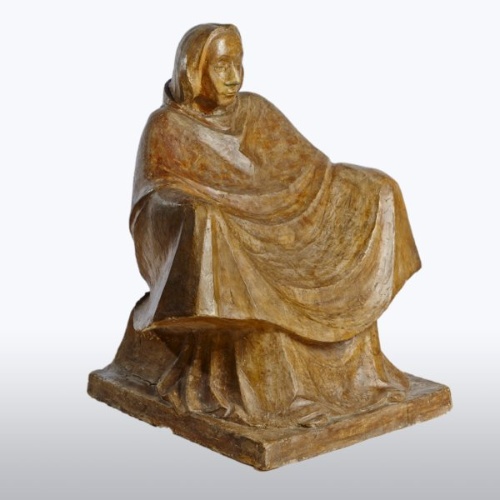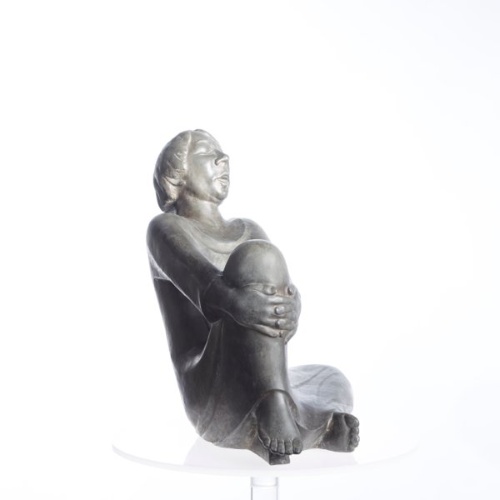Ernst Barlach: Cloister pupil reading
- Ernst Barlach (1870 - 1938)
- Cloister pupil reading
- 1930
- wood (oak)
- height: 114.8 cm
The Cloister pupil reading is a particularly impressive wooden image that illustrates the artist’s connection with mediaeval sculpture. According to his own evidence Barlach saw himself in the tradition of mediaeval carvers, primarily those from north Germany and the Baltic region. In 1909 he wrote: “And Gothic wooden figures are simply revelations for me.” Barlach was certainly aware of the figure of John the Apostle in Güstrow Cathedral, from around 1430, and its composition shows a close iconographic connection to that of the Cloister pupil. Ernst Barlach was considered to be an innovator of wooden sculpture in the 20th century. Around one hundred sculptures, representing almost one quarter of his sculptural works, were created in this material. Using an unconventional technique of wood carving that was very different from that used by other expressionists (e.g. Ernst-Ludwig Kirchner or Erich Heckel), Barlach carved out resting clothed figures from the block of wood, whose delicate surface handling achieved an almost picturesque distribution of light.
Barlach created his Cloister pupil reading in 1930 for the Güstrow manufacturer Richard van Tongel. The sculpture was originally intended as a figurative attachment for a graphic cupboard, in which the collector wanted to store his graphic sheets. Despite Barlach being pursued by the National Socialists after 1933 the Cloister pupil readingwas displayed as part of a global exhibition in Chicago in 1934. Today it is a centrepiece of the Gertrudenkapelle in Güstrow, which has been a museum for Ernst Barlach since 1953. In 1957, the writer Alfred Andersch published his novel Flight to Afar. The centre of the story is the rescue of a figure reading above the Baltic Sea. Andersch introduced Barlach‘s Cloister pupil reading into German post-war literature as a creation of modern sculpture. Ever year many groups of school children visit the Gothic chapel to discuss Andersch’s literary work in front of Barlach’s original work of art. And the school children also ask what this introverted figure was doing: “What was he actually doing? He was reading. He was reading thoughtfully. He was reading carefully. He was reading with great concentration. But he was reading critically. He looked like he knew at all times what he was reading. ... He looks like someone who could close the book at any time and get up to do something else”. This autonomy of the independent-minded person was a thorn in the side of the National Socialists. They perceived independent-minded people as a threat to their totalitarian system. Even the creators of such works of art, such as Ernst Barlach, were branded as so-called “degenerate artists” and ostracised and pursued.
Text: V. P.



























